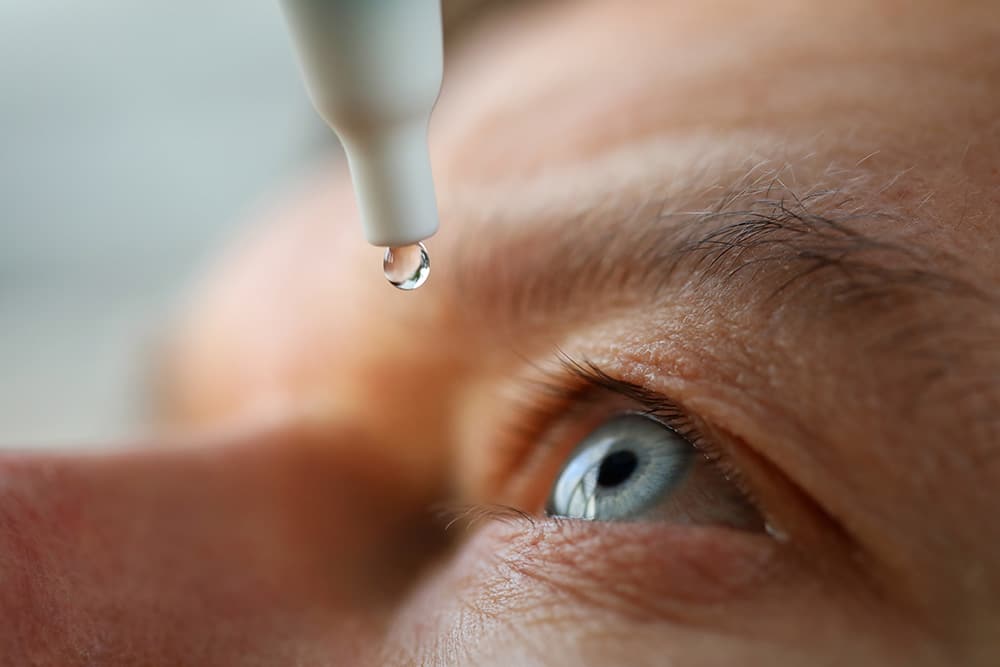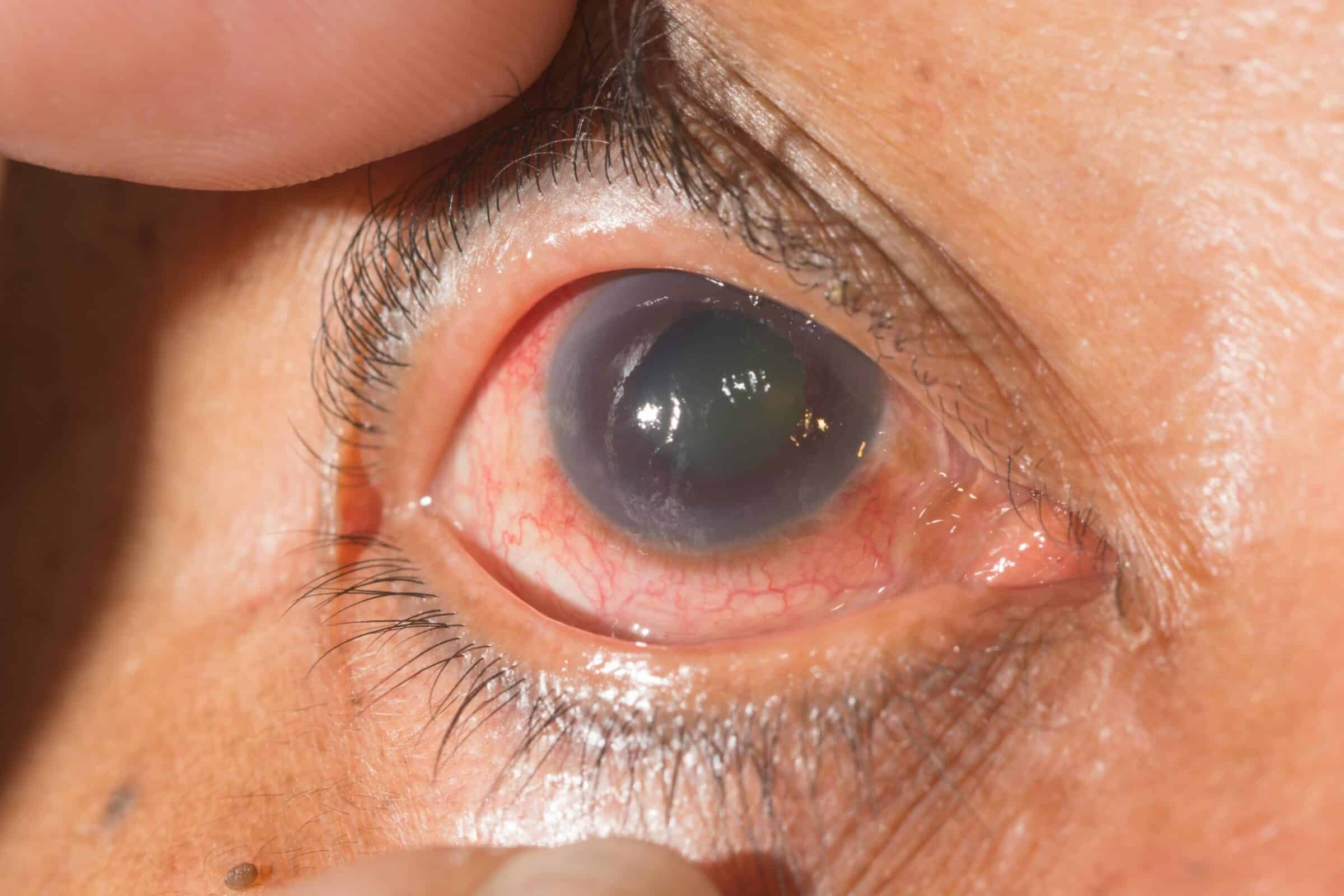Are you worried about the possibility of developing Closed Angle Glaucoma? This is one of the most common types of glaucoma, and it can cause serious loss of vision if left untreated. In this article, we will discuss the symptoms of acute angle-closure glaucoma, how to measure eye pressure, and what treatments are available for those suffering from this condition. We will also explore the potential risks associated with surgical treatment for closed-angle glaucoma.
What is Closed Angle Glaucoma?
Narrow-angle glaucoma is a type of eye disease that occurs when the drainage angle between the iris and cornea becomes blocked. This blockage causes an increase in eye pressure, damaging the optic nerve at the back of the eye, which can lead to blurred vision, eye pain, and other severe symptoms. It is one of two types of glaucoma, the other being open-angle glaucoma.
People with closed-angle glaucoma are more likely to have high blood pressure than those with open-angle glaucoma. Acute closed-angle glaucoma is a medical emergency that requires immediate treatment to prevent permanent vision loss or other eye disorders.
Signs and Symptoms of Closed Angle Glaucoma
It is important to be aware of the signs and symptoms of this condition so that it can be treated as soon as possible.
- Blurred vision
- Eye pain
- Headache
- Nausea and vomiting
- Halos around lights
- Redness in the eye
- A sudden increase in pressure in the eyes
- Tunnel vision
- Difficulty seeing in dim light
- Eye discomfort or pain
- Seeing rainbow-colored circles around lights
- Increased sensitivity to light
- Excessive tearing of the eyes
- Swelling of the eyelids or face
- Unusual eye movements
- A feeling of pressure in the eye
- Family history of glaucoma
- Gradual loss of peripheral vision
If you experience any of these symptoms or suspect that you may have closed-angle glaucoma, it is important to seek medical attention immediately.
Treatment Options for Closed-Angle Glaucoma
Closed-angle glaucoma is a serious medical condition that can lead to vision loss if left untreated. Treatment for this condition typically involves surgical therapy, which can involve various types of surgeries, depending on the individual’s risk factors and other medical conditions. There are different types of surgeries used to treat closed-angle glaucoma, and there are potential risks associated with these procedures.
1. Eye drops
Eye drops are an important and common form of treatment for closed-angle glaucoma. These drugs reduce the production of aqueous humor and improve and help to maintain normal eye pressure. This can be done by using anti-glaucoma eye drops, which help reduce the production of aqueous humor and improve drainage through the drainage canals.
There are several types of eye drops available, including prostaglandin analogs, beta-blockers, carbonic anhydrase inhibitors, and miotics. These medications can help reduce the risk of vision loss associated with closed-angle glaucoma and should be used as directed by your eye doctor.

2. Oral medication
Oral medications prescribed by an ophthalmologist may be used as a form of treatment for closed-angle glaucoma. These medications work to reduce the production of ITF or increase its outflow from the eye. This helps to lower eye pressure safely and effectively. Medications commonly prescribed for this purpose include acetazolamide and latanoprost.
In addition, oral medications can also help reduce severe eye pain and improve fluid drainage in those at risk for glaucoma. Be sure to follow your doctor’s instructions when taking these medications, as they can be beneficial in managing this serious eye condition.
3. Laser trabeculoplasty
Laser trabeculoplasty (LTP) is a safe and effective procedure that uses laser energy to redirect fluid through small channels in the eye (trabecular meshwork). This laser surgery increases the outflow of fluid in a very controlled manner, which helps to improve drainage and reduce intraocular pressure.
This procedure can also help to relieve eye pain and discomfort associated with glaucoma. While it is not a cure for glaucoma, it can provide significant relief from symptoms. It also preserves vision in those affected by this condition.
4. Incisional Surgery
Incisional surgery is a type of treatment used to treat closed-angle glaucoma. This procedure involves making an incision in the eye to improve fluid drainage and reduce elevated eye pressure. The goal of this glaucoma surgery is to prevent further damage to the optic nerve, which can lead to vision loss if left untreated. Incisional surgery is typically used when other treatments, such as laser treatment or medications, are not effective in controlling the condition.
It is important for those with closed-angle glaucoma to have regular eye exams and follow their doctor’s instructions for treatment. Incisional surgery can be an effective treatment to reduce elevated eye pressure and prevent further damage from occurring. However, it is important to note that this type of surgery may not be suitable for all forms of glaucoma, so it is important to speak with your eye doctor about the best course of action for your individual situation.
5. Miotic Therapy
Miotic therapy is a type of treatment used to treat closed-angle glaucoma. This type of glaucoma occurs when the angle between the iris and cornea becomes too narrow, resulting in increased fluid pressure within the eye. This increased pressure can result in damage to the optic nerve, leading to reduced vision and severe pain.
Miotic therapy works by constricting the pupil, which helps reduce fluid pressure in the eye, preventing further damage from occurring. People with glaucoma may be prescribed miotic drops or ointments to help reduce their symptoms and prevent further eye injury. Miotics are usually used in combination with other treatments, such as laser trabeculoplasty or incisional surgery, to provide maximum relief from symptoms and preserve vision. It is important for people with glaucoma to follow their doctor’s instructions for treatment and have regular eye exams to monitor their condition.
6. Implant devices
Implant devices are a type of medical treatment used to treat closed-angle glaucoma. This condition is characterized by increased pressure within the eye, which can lead to irreversible vision loss if left untreated. The goal of treatment is to reduce intraocular pressure to prevent further damage from occurring. Implant devices are surgically placed into the eye and work by draining excess fluid away from the area, thus reducing pressure.
Implant devices are successful in treating closed-angle glaucoma when other treatments such as laser trabeculoplasty or miotic therapy have not been effective. It is important for those with this condition to have regular eye exams in order to monitor their progress and ensure that their treatment is working properly. With proper medical care and routine eye exams, those with closed-angle glaucoma can successfully manage their condition and preserve their vision.
Implantable devices such as iStent or Hydrus Microstent might be suggested, depending on the patient’s condition. It works by creating artificial openings, providing a better flow rate.
7. External Drainage Devices (EDDs)
External Drainage Devices (EDDs) are a type of medical treatment used to treat closed-angle glaucoma. EDDs work by draining excess fluid away from the area, thus reducing pressure and preventing further damage from occurring. Evidence of damage to the optic nerve head should be present before considering EDD therapy in combination with other treatments, such as laser trabeculoplasty or miotic therapy.
Those with closed-angle glaucoma need to have regular vision examinations in order to monitor their condition and ensure that their treatment is working properly. Visual acuity tests can help detect any changes in vision that may indicate a need for additional treatment or an increase in risk factors for lost vision. If successful, EDD therapy can help reduce intraocular pressure and preserve vision in those with closed-angle glaucoma.
Complications Related to Closed-Angle Glaucoma
The most common complication of closed-angle glaucoma is vision loss. If left untreated, increased pressure within the eye can cause irreversible damage to the optic nerve, resulting in permanent vision loss. In some cases, this damage can be so severe that, even with treatment, some degree of vision loss may still occur. Additionally, if left untreated for too long, closed-angle glaucoma can lead to complete blindness.
Closed-angle glaucoma can also cause other complications, such as pain and discomfort in the eyes. This is due to the increased pressure within the eye, which can cause a feeling of pressure or aching in or around the eyes. Additionally, people with this condition may experience headaches and nausea due to the increased pressure on their optic nerves.
Finally, closed-angle glaucoma can also lead to an increase in intraocular pressure (IOP). This is because when fluid builds up in the eye due to blocked drainage pathways, it increases IOP, which can further damage the optic nerve and lead to vision loss. Those with this condition need to have regular eye exams in order to monitor their IOP levels.
Tips for Managing and Preventing Closed-Angle Glaucoma
- Have regular eye exams to monitor your condition and ensure that your treatment is working properly
- Take medications as prescribed by your doctor to help reduce intraocular pressure.
- Wear sunglasses when outdoors to protect your eyes from UV rays
- Avoid activities that increase intraocular pressure, such as straining or lifting heavy objects
- Eat a healthy diet rich in fruits and vegetables to help maintain good vision and health
- Exercise regularly to improve circulation and reduce stress levels
- Quit smoking if you are a smoker, as it can increase the risk of developing glaucoma
Ready for a consultation?
If you are looking for treatment options and want state-of-the-art glaucoma treatment, you need a doctor with experience. The eye specialists at EyeSight Hawaii in Honolulu, HI, and Maui, HI, have the knowledge to help. Make an appointment online or call our office to schedule a consultation today!

